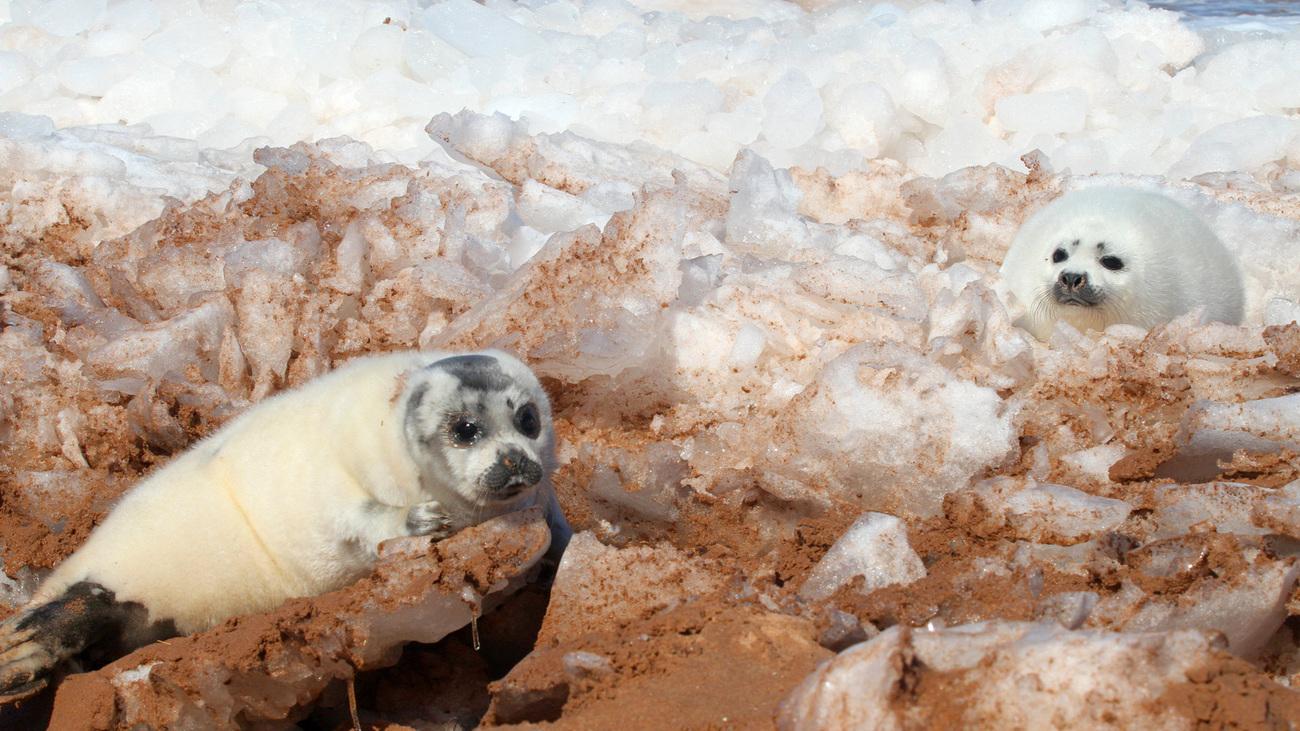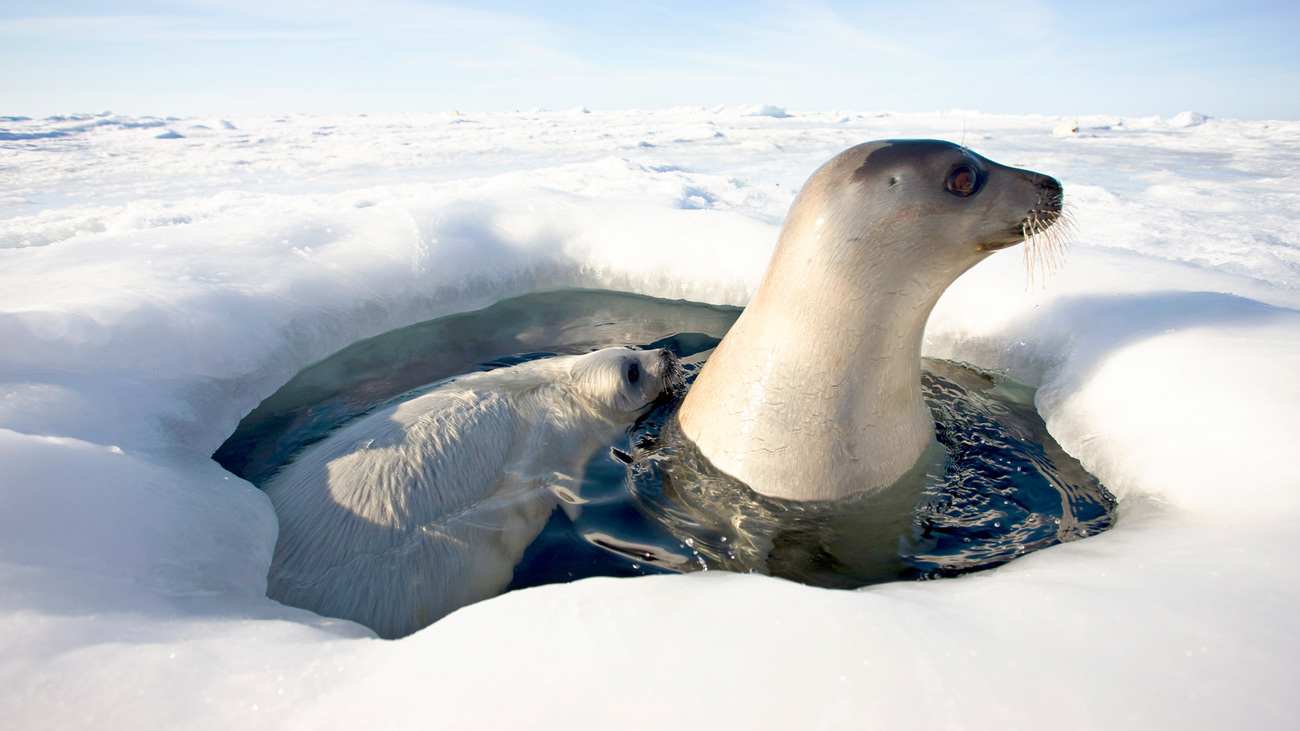Ending the Commercial Seal Hunt - Canada
ifaw was first founded to end the seal huntclimate change challenges seals destined for annual Canadian hunt
climate change challenges seals destined for annual Canadian hunt

As if harp seals haven’t had it tough enough because of Canada’s cruel, needless, and wasteful annual commercial seal hunt, the rigors of climate change make things even more difficult for these beloved marine mammals.
“Seal mothers and their pups need ice, and in many places now, the ice just isn’t there when they need it,” says Sheryl Fink, IFAW’s director of wildlife campaigns in Canada.
Even though seal products—long considered a waste of seals’ lives by many—have thankfully lost their appeal globally, the Canadian government continues to support the archaic hunt politically and financially to sustain it. The annual event remains the largest authorized slaughter of marine mammals anywhere on the planet.
climate change melts their ice
It’s unfathomable to even imagine, but hunters kill harp seals with clubs, guns, or hakapiks (which resemble pickaxes). They are usually defenseless pups less than three months old.
Because of climate change, it’s even more precarious for a pup to reach that age. Mother seals give birth to them, and nurse them in late February and early March on stable ice floes—ice that provides protection from predators and provides a safer place where mother seals can still hunt for food in nearby waters.
“This year is expected to be warmer than average in Atlantic Canada, and so far, ice formation is far below the historical ice coverage for this time period,” says Fink.

To every action in nature, there is a reaction: Changing climate conditions reduce the thickness and duration of sea ice, which can change the abundance of seals’ prey. Research has shown this may cause declines in female harp seal reproductive rates.
Harp seal mothers are very particular and unlike other seal species, won’t give birth on land if there’s no suitable ice for them. Instead, they abort the pups in the water.
If the mother seals do find ice, but it doesn’t stay stable long enough for pups to finish weaning and learn to swim, these tiny seals can be crushed or washed ashore when the too-thin ice breaks up.
Fink says harp seals who don’t have suitable ice habitat have been found wandering in front yards and parking lots, after having washed ashore and not knowing where to go.
Although those in favour of killing seals will say this proves there are “too many” harp seals, it is in reality the tragic evidence that the species is losing its critical ice habitat.
value of hunting seals declining
Last year, 26,847 harp seals were reported killed, at a reported value of CAD$749,239 or an average pelt price of only $28. The past 3 years have been among the lowest kills ever reported. To compare, in 2006 when the industry was at its peak the average value per seal skin was $102.
In 2023, there’s no sound rationale for killing baby seals, says Fink. “Despite the waste of hundreds of millions of dollars by successive Canadian governments since 1996 to try and develop the sealing industry, today there are very few markets for commercial seal products,” she says. “We should let it become a thing of the past and stop propping it up with taxpayer dollars. There is no scientific support for the claim that harp seals are overpopulated or negatively impacting their ecosystem, and there’s no need to reduce their numbers, particularly when they are being threatened by climate change.”

Several viable and beneficial new industries could economically support coastal communities that traditionally relied on seal hunting, she says. Those include green energy, and retrieval of lost “ghost fishing gear” from the ocean, which is extremely hazardous to sea creatures and humans alike.
Canadian government vs. will of the people
Incremental progress includes Europe banning imported products from young whitecoat harp seals and blueback hooded seals in 1983. The European Union banned all seal products from the market in 2009 but still allowed those from Indigenous peoples.
IFAW is not opposed to the “personal use” hunting of seals, which allows coastal residents to hunt meat for their own consumption, says Fink, but the large-scale slaughter of thousands of animals is indefensible.
“Indigenous peoples in Canada have a constitutionally protected right to harvest marine mammals, including seals,” said the Government of Canada in a statement in November 2022. “Our government is committed to working with Indigenous partners and industry to maintain the existing markets for Canadian seal products and support innovation in developing new products and markets at home, and around the world,” said The Honourable Joyce Murray, Minister of Fisheries, Oceans and the Canadian Coast Guard at that time.
A pervasive yet unsubstantiated claim is that seals negatively impact commercial fishing. However, Fisheries and Oceans biologists say that while it is easy to point the finger at seals for depleted fish stocks, they don’t appear to have a significant effect.
The CBC reported on March 12, 2023 that a parliamentary committee met to examine the impact of seal herds on commercial fish. “During the hearing, Fisheries and Oceans Canada (DFO) officials acknowledged that seals eat large amounts of fish, but added it is working to fill gaps about their impact on fish species,” the CBC noted.
The story noted that efforts to harm or kill seals could have severe consequences for Canadian seafood exports. Paul Lansbergen, president of the Fisheries Council of Canada, said, “In terms of market acceptance, some importers and domestic buyers do not want to be linked with companies and or countries associated with the sealing industry, so there must be extreme caution by the government.”
“Allowing an expanded seal cull would have disastrous effects for Canada’s fishing industry, as it could violate the US Marine Mammal Protection Act and jeopardize access to the main export market for Canadian seafood” said Fink. “It could also have negative and unintended ecological effects on other marine species and fisheries. It’s simply not a risk Canada can afford to take.”
For its part, IFAW has been instrumental in reducing the size of the hunt by 95 percent since 2009, Fink says. “We continue to fight for the seals.”
Related content
Every problem has a solution, every solution needs support.
The problems we face are urgent, complicated, and resistant to change. Real solutions demand creativity, hard work, and involvement from people like you.